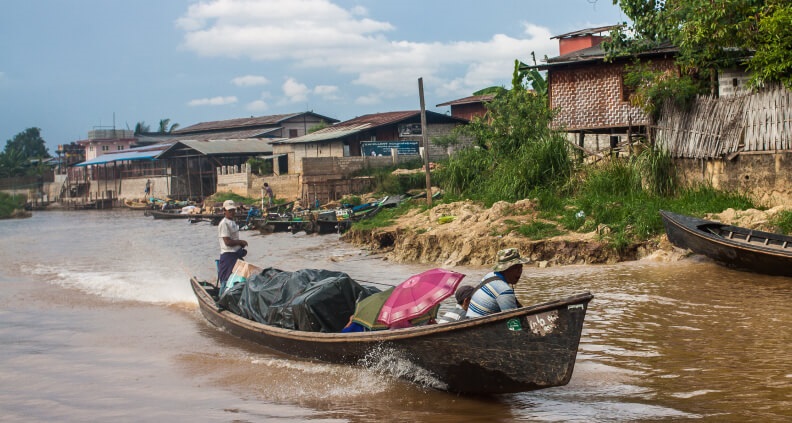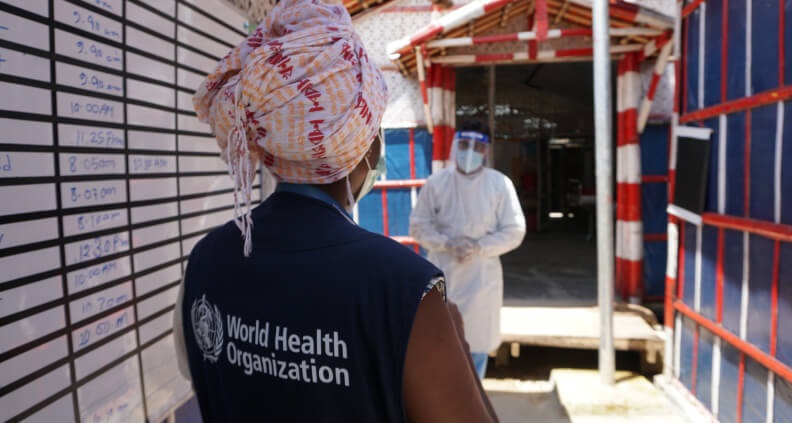
South-East Asia Region
- Requirements (US$): 86.2 million
Context
The WHO South-East Asia region comprises 11 middle- to low-income countries and is home to over a quarter of the global population. The region is vulnerable to health emergencies caused by natural hazards (e.g., earthquakes, cyclones, floods, landslides), emerging and re-emerging infections and zoonotic diseases (e.g., Nipah, Japanese encephalitis etc) and conflict. Rapid urbanization, ageing populations, unplanned development, the impact of climate change and armed conflict are among the many factors that exacerbate the vulnerabilities affecting millions of people every year. It is of paramount importance for the region to be prepared to respond to health emergencies. However, investment in the health sector is limited and response remains a challenge.
SEARO was one of the regions hardest hit by the current COVID-19 pandemic. Since January 2020, Member States in the region have reported over 60 million cases of COVID-19 and almost 800 000 deaths. The devastating health effects of the pandemic were followed by catastrophic socio-economic consequences, and several countries in the region are currently facing challenges in financing the public health sector. In addition, several countries in the region continue to face protracted and acute emergencies, including more than a million people (Rohingya refugees and host populations) in need of humanitarian assistance in Bangladesh for the fifth consecutive year. The region is also affected by the current mpox epidemic. Although the numbers of cases are limited, it is critical that the region remains ready to respond given the many risks and vulnerabilities.
Regional Priorities
The WHO South-East Asia Regional Office continues to work with Member States and partners on health systems recovery and building health systems resilience to ensure health security. To strengthen health systems, the region published the Regional Strategic Roadmap on Health Security and Health Systems Resilience for Emergencies, which will guide the region from 2023 to 2027. The strategies developed for 2023 focus on:
- Supporting targeted and context-specific emergency responses in line with global technical standards and guidance to provide health care services to populations including the most vulnerable
- Facilitating the recovery of health systems, considering principles of disaster risk reduction and health systems resilience
Key priority areas include:
- Ensuring a coordinated response to emergencies, building on the comparative advantage of all stakeholders through the existing platforms at the regional and country levels through UN and humanitarian teams.
- Ensuring cross-border collaboration in crisis response.
- Ensuring effective disease surveillance, risk communication and community engagement, infection prevention and control, laboratory support and clinical management.
- · Ensuring compliance with norms and standards on mass gatherings and points of entry in health response.
- Ensuring continuity of essential and basic health services, particularly in fragile, vulnerable and conflict-affected settings.
- Addressing urgent health care needs of migrants and refugees and other vulnerable groups.
- Supporting regional stockpiling, developing regional hubs and strengthening the medical supply chain.

Focus Countries
Myanmar
- People in need: 17.6 million
- People targeted: 4.5 million
- Requirements (US$): 13.8 million
With the current political situation and the ongoing armed conflicts in several states across the country, Myanmar is facing several challenges to provide essential health services. Through the Health Emergency Appeal, WHO is targeting 4.5 million people. The total funding requirement is estimated at $USD 13.8 million for lifesaving health interventions, preventing disease outbreaks, ensuring essential health service provision and building capacities among frontline health workers.
Cox’s Bazar Bangladesh
- People in need of health assistance: 1.4 million
- Requirements (US$): 12.2 million
Bangladesh enters its fifth year of supporting Rohingya refugees in Cox’s Bazar, which remains an extremely vulnerable context. Currently, the country hosts 909 282 Rohingya refugees in 33 camps in Ukhiya and Teknaf Upazilas excluding 27 451 who had been voluntarily relocated to the island of Bhasan Char in Noakhali district. WHO, in collaboration with the government, will mainly support outbreak readiness and response activities and aims to cover a total of one million people, including both host communities and Rohingya communities. The key objectives will be to sustain a streamlined and coordinated health sector response to disease outbreaks and other health-related hazards and reaffirm multisectoral partnerships and prepare for, prevent and offer a timely response to outbreaks of communicable disease and other health-related hazards, including for periods of increased risk during the monsoon and cyclone seasons.
Sri Lanka
- Requirements (US$): 4.9 million
The unprecedented economic crisis that hit the island nation in 2022 has led to a significant proportion of the population not having access to essential public health services. The lack of foreign exchange has limited imports of fuel, essential medicines and consumables in a country that is highly dependent on imports. The total funding requirement is estimated at 4.9 million for strengthening coordination of health response, clinical care, surveillance, laboratory services, vaccination, public health and social measures and community engagement and equitable access to countermeasures and essential supplies.
Success stories
North-Eastern Flash Floods 2022
In Bangladesh, flash floods started in the third week of May 2022, initially affecting two districts of Sylhet division in the northeast of Bangladesh. From the third week of June 2022, they reached a devastating magnitude and affected more districts. Most areas were inundated with flood water due to incessant rainfall and rising water levels. Due to power outages, most forms of communication were severely disrupted. From 17 May to 28 June 2022, the National Health Emergency Operations Centre and Control Room of the Directorate General of Health Services (DGHS) recorded a total of 7 731 cases of waterborne diseases and injuries and 87 deaths.
As a preparatory activity, WHO Bangladesh organized a health cluster meeting on 14 June 2022 to discuss preparedness and response to the floods, including drowning and snakebites as one of the most common immediate causes of death during floods. Following the emergency meeting, WHO conducted a quick health sector needs assessment in the affected districts and provided support to local health authorities in flood-affected areas in disease surveillance and coordination activities without hampering their normal immunization activities. Simultaneously, WHO provided emergency drugs (such as antibiotics, water purification tablets, etc.) to contain disease outbreaks and reduce morbidities and mortalities.

WHO IPC specialist Rebecca Rachel Apolot, Bangladesh
Financial requirements
Overall country funding requirements, including COVID-19, by pillar (US$ ‘000)


Overall regional funding requirements for COVID-19 and other emergencies (US$ ‘000)


Overall funding requirements by pillar for COVID-19 (US$ ‘000)


For more information
Dr Edwin Salvador | Regional Emergency Director | WHO SEARO | salvadore@who.int
Dr Nilesh Buddh | Lead (Regional Emergencies) | WHO SEARO | buddhan@who.int

